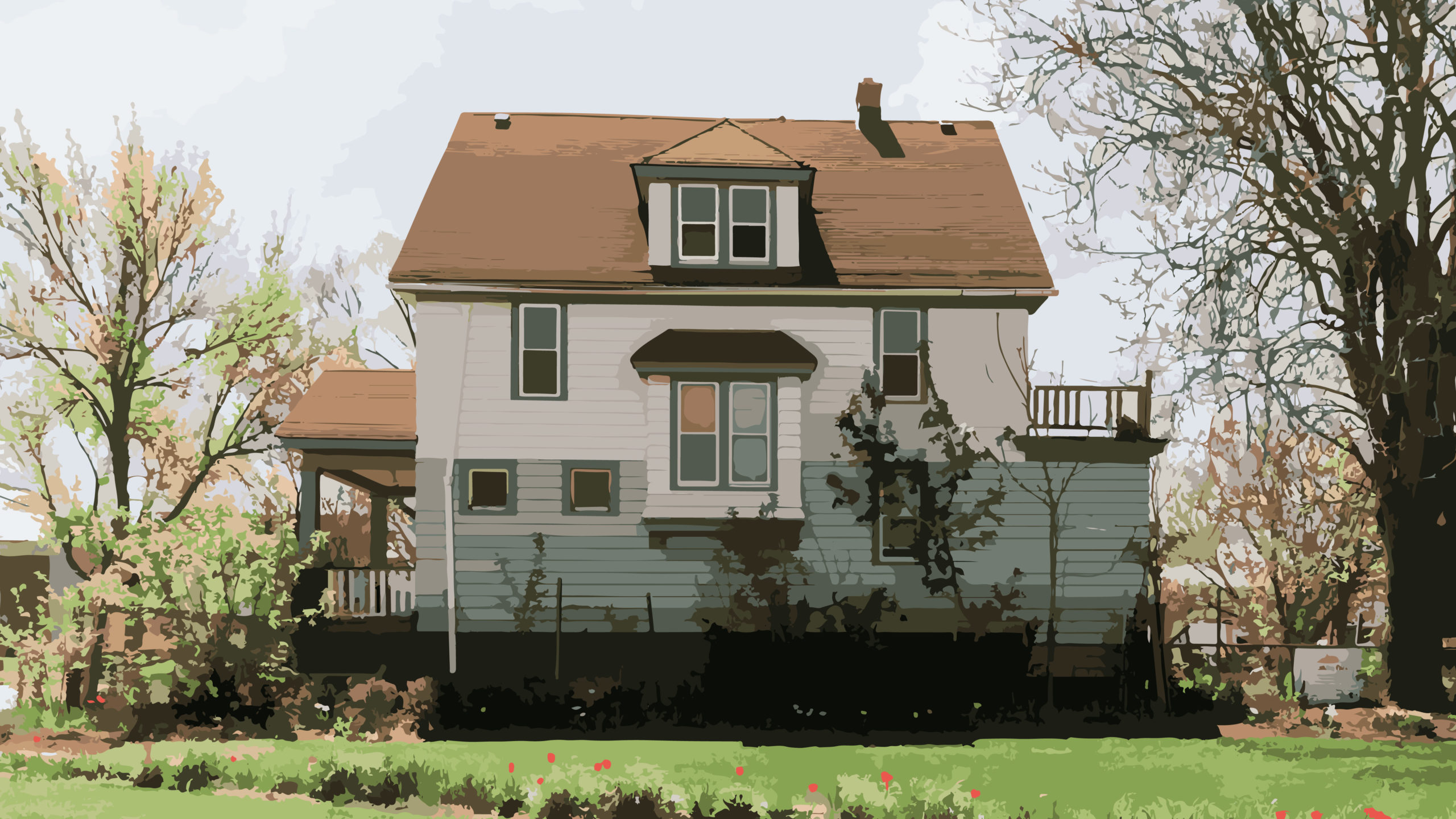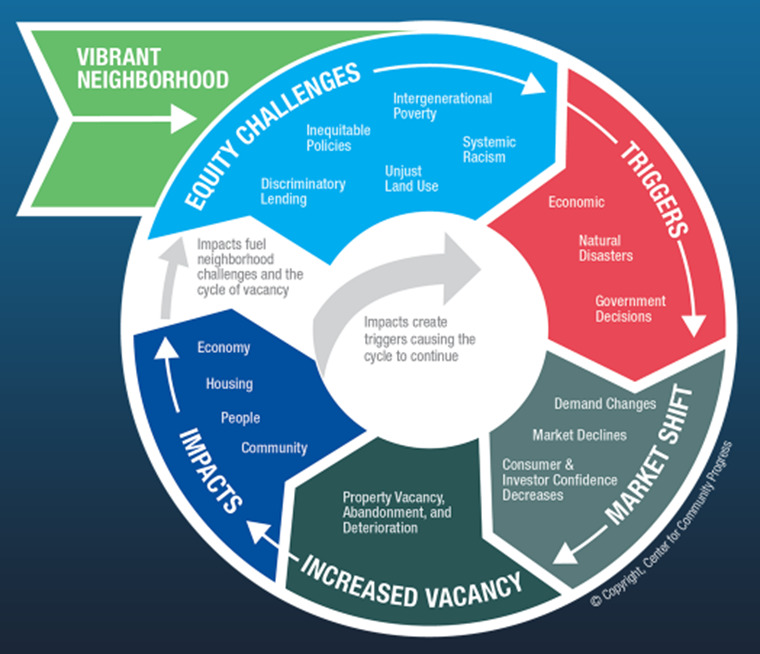Topic(s): Community Revitalization, Projects and Events
Lessons from 2022 VAD Academy
July 18, 2022

On June 15, more than 900 people joined us for the 2022 VAD Academy—a day-long virtual bootcamp for professionals and community partners whose work and communities are impacted by vacant, abandoned, and deteriorated (VAD) property challenges. Throughout the day, experts from Community Progress led trainings on the causes of systemic vacancy, the basics of land banking, what a property revitalization framework looks like, and more.
If you’re wondering “What can I do about vacant properties in my community?” here are some key takeaways from this year’s VAD Academy, and some starting points for change:
1. Revise laws and ordinances and change problematic policies and practices.
Traditional punitive approaches to addressing VAD properties alone are not enough to fix the problem. Demolishing individual problem properties (which might result in a vacant lot with dumping problems) and issuing fines and citations (which might be ignored) doesn’t address the root issues in the cycle of vacancy. Equitable, effective, and efficient revitalization requires incentives and encouragement, not just punitive measures. Many property owners want to comply but are unable to, due to the cost of needed repairs.
The goal of getting owners to comply with repairing their properties is to restore confidence in a neighborhood and stop neighborhood decline—and punitive measures often don’t create these outcomes. A more effective approach uses a diverse set of tools and is collaborative with the community members who are most affected. Specific, thoughtful revisions to tools like code enforcement can meaningfully contribute to neighborhood stabilization.
Watch the VAD Academy session on Strategic Code Enforcement 101 by Associate Counsel to National Initiatives Libby Benton here.
2. Identify untapped market potential to build stronger housing markets.
There is bountiful market data available to help understand markets and inform policy…but first you have to know where to find it. Markets are also hyperlocal—a neighborhood-level market and a city market are distinct sub-markets, and data (like median sale price of homes) might differ drastically just one street over.
This data includes job trends, migration, price trends, and construction numbers. Some indicators directly measure market activity. The three most of these significant indicators are sales price, sales volume, and sales to homebuyers versus investors. Some indicators, in contrast, affect or reflect the market. These factors include tax delinquency, sale, or foreclosure; vacant properties; violent crime; and homeownership rates.
This data can come from many sources—sales transactions, parcel surveys, city or count records, tax assessor records, US Postal Service data, and others. Understanding the dynamics of small areas like individual properties, blocks, and neighborhoods is key to developing revitalization strategies tailored to block-by-block needs.
Watch the VAD Academy session on Using Data to Understand Markets by urban policy expert and Community Progress Senior Fellow Alan Mallach here, and read his report Neighborhoods by Numbers: An Introduction to Finding and Using Small Area Data here.
3. Be prepared for the unexpected!
Faciliting change in your neighborhood requires some key elements to be in place:
- Wide recognition of the problem
- Solid backing from experts and practitioners
- An empowered political champion in favor of the reform
Without all three elements, it can be challenging to advance meaningful policy and practice reforms. But conditions in the community development landscape can also change quickly.
In an example that West Virginia Land Stewardship Corporation Executive Director Taylor Bennett shared, property tax sale process reform efforts in West Virginia had stalled. But when a new employee at the Office of State Auditor shared Community Progress’ report What Does the Sale of Property Tax Debt Mean for West Virginia Communities?, practitioners gained an important advocate. The state auditor’s new understanding of this much-needed reform allowed Bennet and her colleagues to move forward authoring new property tax sale legislation.
Watch the VAD Academy session on Delinquent Property Tax Enforcement 101 by Taylor Bennett and our Technical Assistance Senior Advisor Kim Grazini here.
Couldn’t join us? Full recordings of each session can be viewed by visiting the Community Progress YouTube channel. Subscribe to our mailing list so you don’t miss out on other free educational webinars.
Do you represent a community facing vacant property challenges and are interested in taking the next step to addressing it? Contact us to learn more about the customized, expert technical assistance services Community Progress provides to communities of all sizes across the country.
Subscribe to join 14,000 community development leaders getting the latest resources from top experts on vacant property revitalization.

